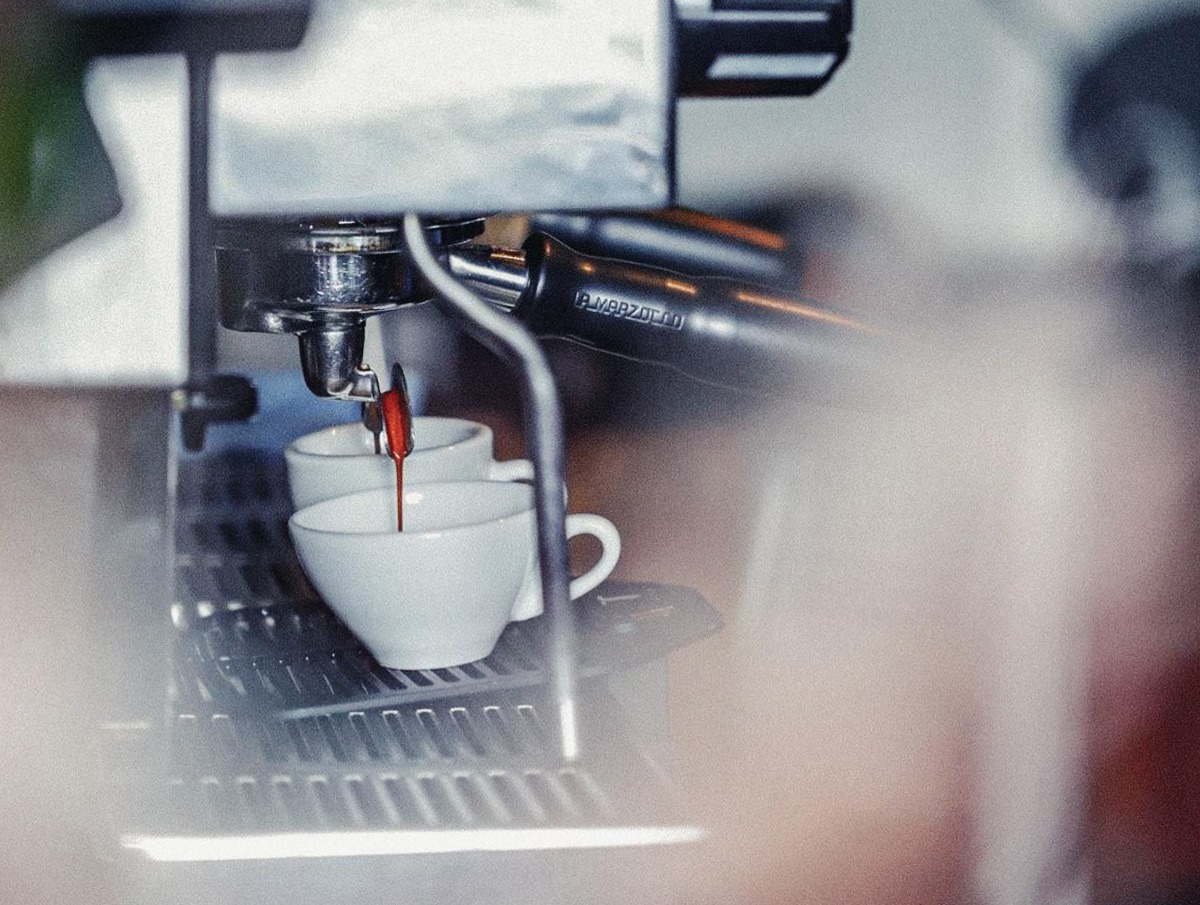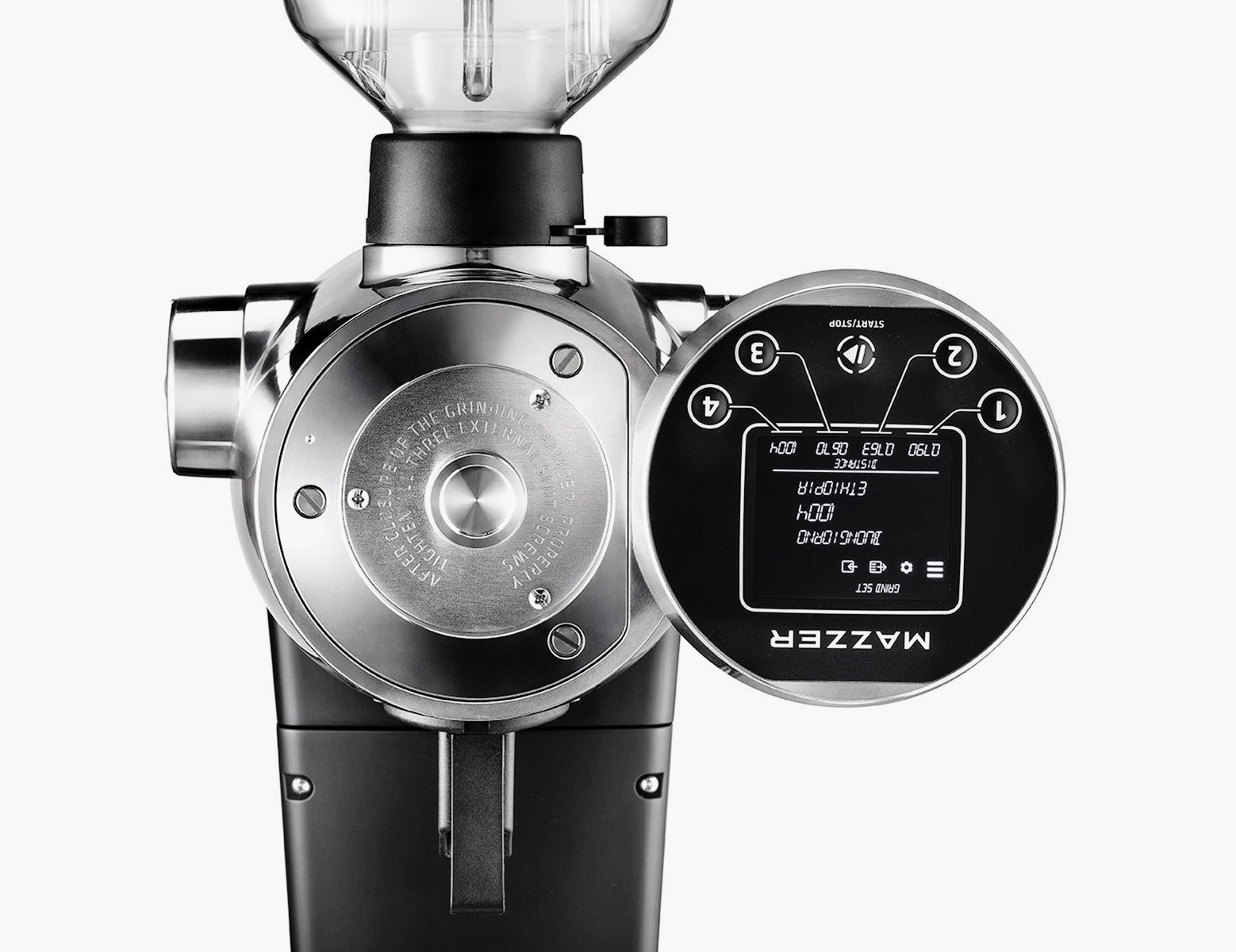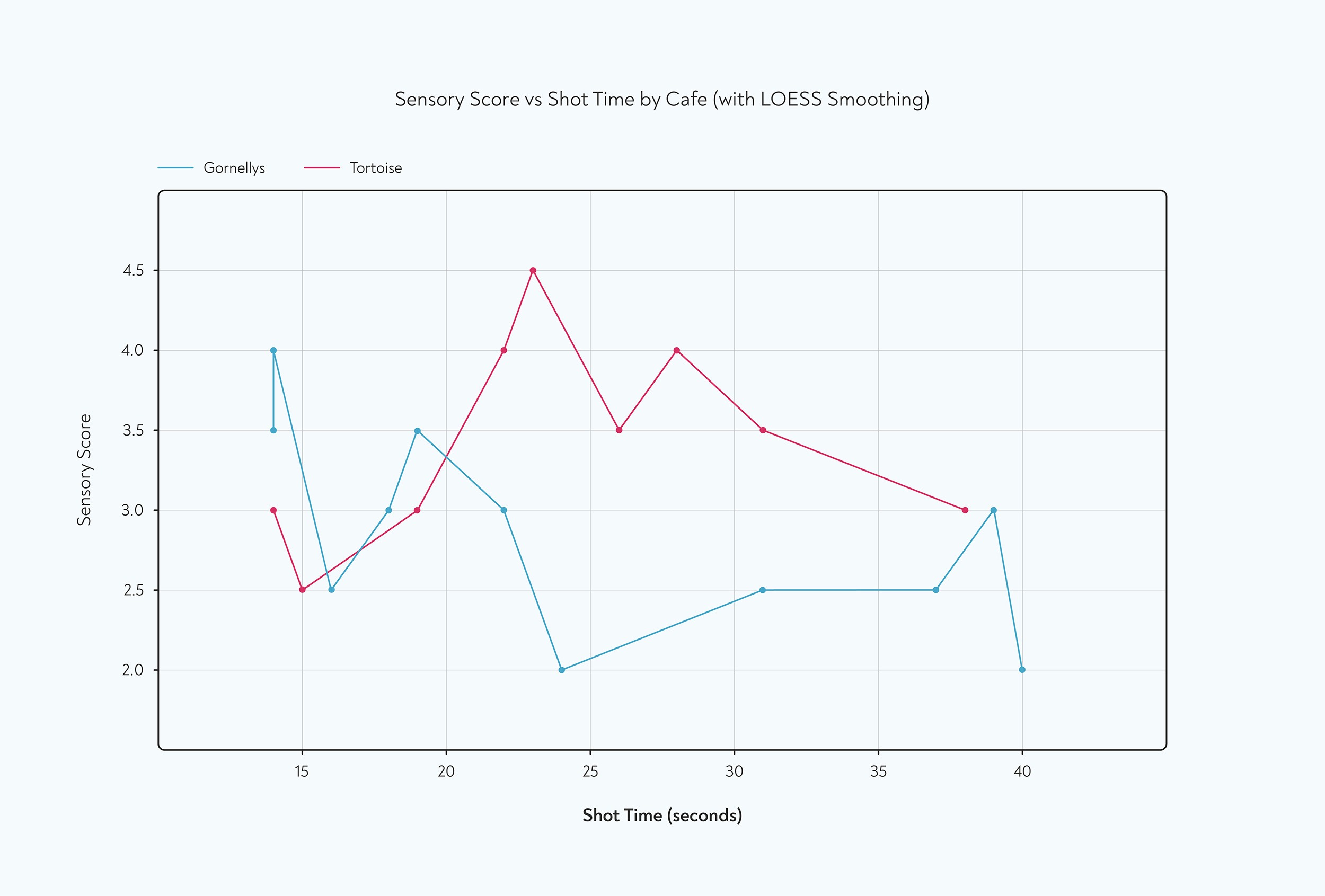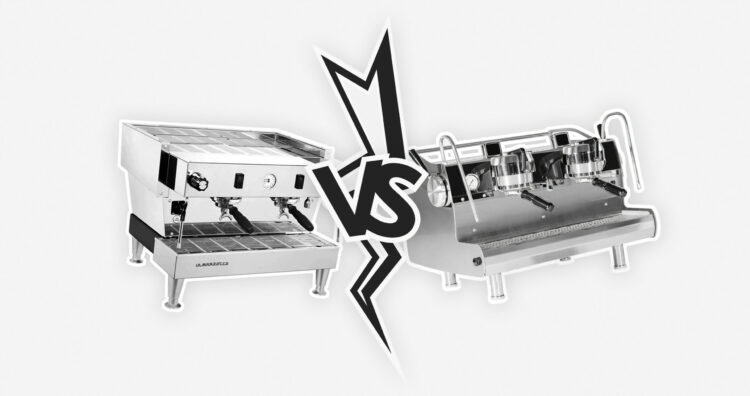There’s a observe we now have admired for a very long time which we’re going to discover on this publish to see if our assumptions are appropriate. Sometimes you see a brand new startup espresso enterprise dive within the deep finish and drop some critical coin on the perfect espresso machine they’ll discover. If the cafe succeeds, that is normally a win as a result of that location has had efficiency, fashionable styling and the newest know-how on its aspect proper from the start? My Grandfather would have advocated that method. I can hear him saying “I’m too poor to purchase low-cost instruments”. That’s all properly and good in the event you’re speaking about hammers and drills. However in the event you put money into the best espresso machine proper upfront earlier than the enterprise mannequin has confirmed itself in your chosen location and issues don’t go to plan, you should have dropped the perfect a part of US$20,000 on a single piece of apparatus. That’s practically two 12 months’s lease on a restaurant in my city. So the choice is to dip your toe within the water earlier than you dive in. Perhaps you put in a pleasant outdated warmth exchanger which you discovered on Market Place. Or higher nonetheless, you simply lease the time honoured image of ‘reliability + efficiency’ — the La Marzocco Linea Traditional for a short while to see if issues work out.
 Lloyd’s La Marzocco, Linea Traditional (Photographs Courtesy of Tortoise Espresso)
Lloyd’s La Marzocco, Linea Traditional (Photographs Courtesy of Tortoise Espresso)
Outdated Lineas don’t have a lot that may go incorrect on them. I’ve by no means come throughout one with a important fault like a cracked or rusted boiler. However they’re not precisely massive within the know-how division both: There’s no PIDs; no stream restrictors; no insulation; no volumetrics (Some 90s Lineas have volumetrics, some don’t); no cool-touch steam wands; no stream profiling capabilities. However they’ve obtained neatly assembled chunky electrics; they’re product of high quality stainless-steel, and if one thing does go incorrect, you’ll very simply discover spare elements for them as a result of they’re ubiquitous within the espresso world.
You recognize I truly did purchase an outdated warmth exchanger on Market Place lately for a few hundred bucks. It was meant for my Sister-in-Regulation’s new cafe enterprise known as Gornelly’s in Castlemaine. It truly seems to be tremendous cool however it seems it’s lacking fairly an important piece of pipe work with a really obscure gauge of thread on it which Gaggia themselves now not inventory. So this machine stays in my sister-in-law’s shed and as an alternative of turning round and shopping for a brand new machine, Astrid Connelly and her husband David Gorniak (=Gorn-ellys) organized to rent Lloyd Meadow’s outdated Linea Traditional as an alternative.
You recognize Lloyd — he’s the anchor on our new lightspeed Espresso coaching course, Barista Zero. And he’s now the proud proprietor of a Synesso MVP — with volumetrics, strain profiling, PIDs, stream restrictors, a number of boilers and pumps, and beautiful styling.
We requested Lloyd to stroll us by way of the upsides of upgrading the machine at Tortoise Espresso.
BH: In what methods has the MVP benefited the enterprise since its arrival?
LM: We love having a bit extra management over all our variables. It actually helps when dialling in new espresso to have management over temperature and strain profiling to essentially get essentially the most out of them. We love having the choice to manually profile a shot or have the machine do all of it for us, makes an enormous distinction after we’re busy and simply must get actually nice outcomes however much more effectively.
BH: Figuring out the success of Tortoise, in the event you may do it once more, would you make the funding from the beginning, or sooner, or would you do all of it the identical?
LM: If I used to be doing all of it once more underneath related circumstances and with the same finances I’d do all of it the identical. The second hand market is flooded with actually high quality espresso machines, and understanding how equally they scored; it simply reinforces {that a} humble machine is greater than able to getting implausible outcomes. I’d at all times prioritise getting a extremely good grinder as that’s the world that you just’ll see a major distinction. Then because the enterprise grows, your gear can develop with it, and you’ll simply make upgrades when your small business can help it.
There’s a 25-year know-how hole between Lloyd’s Linea Traditional (circa 1990), and the MVP (circa 2015). Notably, Synesso have been pioneers of multi-stage strain profiling; their machines are insulated, every impartial boiler is PID managed and the water passes by way of a stream restrictor earlier than it enters every group. All these elements contribute to temperature stability and consistency between pictures, they usually development in the direction of increased extraction. Please be aware, we’re not seeking to talk about the professionals and cons of any single piece of this puzzle, equivalent to strain profiling. If that’s your jam, begin with this lesson from our Superior Espresso Course. Our goal right here is to search out out what positive factors (if any) Lloyd has gotten from upgrading from a 25 12 months outdated machine to an 8 12 months outdated machine. And to search out out if Gornelly’s is leaving something on the desk, by going for the prudent, if considerably conservative possibility of simply renting an outdated machine with completely no automation in any respect.
An Analogy for the Experiment
We designed an experiment to check the efficiency each when it comes to flavour and extraction effectivity. There are numerous variations between these two machines and isolating any single certainly one of them could be nearly inconceivable. Right here’s a great way to consider how we designed this experiment to make it a good comparability: Let’s say you ask Lewis Hamilton to leap in two F1 automobiles from rival producers and evaluate their efficiency. Lewis will like every automobile to be arrange in particular methods to assist him get the perfect out of it. They may have totally different tyre strain for example or totally different quantities of suspension stiffness. But in the end, one car will go faster round the track than the other and people will consider that a fair test. The constant is Lewis and we trust his decisions on getting maximum performance out of each car. So we’re framing this post in the same way. Lloyd tuned each of these machines in such a way that he believes will achieve maximal performance and we turned up and scored each shot, and took TDS readings across a range of shot times from 14 seconds up 40 seconds. Our goal was to find the extraction ceiling and to identify the shot time band at which scores started to improve and then started to decline.
Methodology
 Mazzer ZM coffee grinder
Mazzer ZM coffee grinder
We carried a Mazzer ZM grinder between each location to make sure this variable was removed from the equation. We also used the same Pesado HE% filter basket on both machines. Every shot was dosed with 18.5g of coffee and we attempted to yield as close to 45g out as the tech would allow.
We used the same coffee from the same roast batch at both locations: An anaerobic natural processed catimor variety from Yunnan, roasted by Firebean in Castlemaine.
The pump pressure on the Linea was set to 9 bars.
Lloyd has the MVP set up to run a three bar ramp up to pressure; a 9-bar middle area and then the final 10g- of a 45g gram shot is ramped back down in pressure to 3 bars.
Results
This plot for extraction percentage vs. shot time provides a clear view of the trends for both cafes:
Tortoise shows a steady increase in extraction percentage with shot time, suggesting that longer shots yield higher extraction initially, followed by a potential levelling off or slight decline at longer times.
Gornellys indicates a similar upward trend, though it appears to reach its peak extraction at slightly shorter shot times than Tortoise.
The regression lines (dotted) for each cafe help to visualise the relationship between shot time and extraction percentage:
Tortoise’s regression line slopes upward more noticeably, reinforcing the idea that extraction percentages increase with longer shot times up to a point.
Gornellys’ regression line is less steep, indicating a weaker relationship between shot time and extraction, suggesting more variability or inconsistency in their extraction process.
These regression lines visually confirm that Tortoise’s extractions are more predictable and potentially more optimised than those at Gornellys.
Sensory Scores
 Here is a summary of the sensory scoring for each café, based on a scale from 0 to 6.
Here is a summary of the sensory scoring for each café, based on a scale from 0 to 6.
We borrowed the zero to six scale from the WBC scoring protocol and aggregated the flavour, tactile and taste scores into a single ‘Overall’ score where 2 describes an ‘average’ espresso, three is ‘good’, and 4 is ‘very good’. The shots pulled on the Synesso MVP received higher sensory scores than the LM Linea on average by a bit over half a point across a range of shot times from 14 seconds with up to 40.
1: LM Linea:
Average Score: 2.86
Score Distribution:
• Common scores include 2.5 (3 counts) and 3.0 (3 counts).
• Scores range from a minimum of 2.0 to a maximum of 4.0.
2: Synesso MVP:
Average Score: 3.44, slightly higher than Gornelly’s.
Score Distribution:
• Scores are more varied, with 3.0, 3.5, and 4.0 each occurring at least twice.
• Scores range from 2.5 to 4.5, showing slightly higher ratings on average.
 This chart shows how sensory scores increase initially with shot time for Tortoise, reach an optimal range, and then begin to decline with longer shot times. The Linea at Gornelly’s has a flatter curve, indicating a less pronounced optimal range, with scores less affected by shot time changes.
This chart shows how sensory scores increase initially with shot time for Tortoise, reach an optimal range, and then begin to decline with longer shot times. The Linea at Gornelly’s has a flatter curve, indicating a less pronounced optimal range, with scores less affected by shot time changes.
 Here is a scatter plot with regression lines showing the relationship between shot time and sensory score (WBC Score) for each location. The trend lines help illustrate how shot time correlates with sensory scores for both Gornelly’s Café and Tortoise Espresso, providing insight into whether longer or shorter shot times might be associated with higher sensory scores at each location. AT Gornelly’s the scores clearly trended downwards as shot times advanced — suggesting turbo shots were working better on the Linea than slow shots >30 seconds.
Here is a scatter plot with regression lines showing the relationship between shot time and sensory score (WBC Score) for each location. The trend lines help illustrate how shot time correlates with sensory scores for both Gornelly’s Café and Tortoise Espresso, providing insight into whether longer or shorter shot times might be associated with higher sensory scores at each location. AT Gornelly’s the scores clearly trended downwards as shot times advanced — suggesting turbo shots were working better on the Linea than slow shots >30 seconds.
Conclusion
If you run a statistical analysis* on the difference between the performance of both these machines in the way Lloyd chose to set them up, the sensory scores show a trend but not a statistically significant difference. But the difference in extraction efficiency on the other hand is very significant.
The extraction analysis between the La Marzocco Linea Classic at Gornellys and the Synesso MVP at Tortoise shows a very low p-value of 0.00009 alongside a high t-statistic of 5.08. This extremely low p-value suggests that the difference in extraction between these machines is highly unlikely to be due to random chance.
So should you get a new machine and take the risk, or does this test make you feel a bit more comfortable that renting or buying a classic second hand machine is a better way to go?
Here’s what David had to say on the subject:
On the whole the machine doesn’t matter nearly as much as which beans you use. And customers definitely don’t care either. They only ever ask ‘whose coffee are you using?’ not ‘whats your machine?’ I can get a really decent coffee out of the old second hand La Marzocco. It would be interesting to see** the overall cost savings with higher extraction efficiency.
Both Lloyd and David seem to think that the stepping stone approach made a lot of sense for their businesses and I’m inclined to agree. Ironically, and in the interest of full disclosure, it’s worth noting that we were supposed to run this experiment a week earlier and the night before testing day, the solenoid on the Linea needed replacing, which sidelined the machine for a couple of days. I’d say that was bad luck. No matter how old or new your machine is, it’s always worth lining up a contingency option when your machine goes down because they all do occasionally — old or new. In this particular case, because it’s family, the contingency option was me loaning Gornelly’s the one group machine from my kitchen for a couple days while the Linea was in the pit lane. But she’s back up and racing now … to the boundaries of coffee.
Does a more Efficient Machine Save You Money?
**In answer to David’s question, there is some potential saving in ingredient costs when you use a more efficient espresso machine. Across the shots we pulled, we measured an average extraction on the MVP of 19.77% at Tortoise and 18.52% at Gornellys. So with higher extraction efficiency, Tortoise could theoretically use about 93.6% of the coffee that Gornellys uses to achieve the same TDS.
So if Gornellys used 1 kg of coffee per day (or 365 kg per year), and this coffee cost $50 AUD per kilogram, their annual cost would be 18,250 AUD. So based on our study, Tortoise could make espresso of the same size and strength for just 17,082 AUD, leading to annual savings of around 1,168 AUD.
* In statistical tests, the t-statistic measures the size of the difference relative to the variation in data, and a higher t-statistic often points to a stronger difference. Meanwhile, the p-value indicates the probability that the observed results happened by chance; here, the tiny p-value highlights a highly significant difference, suggesting the Synesso MVP may consistently achieve higher extractions than the Linea Classic.





